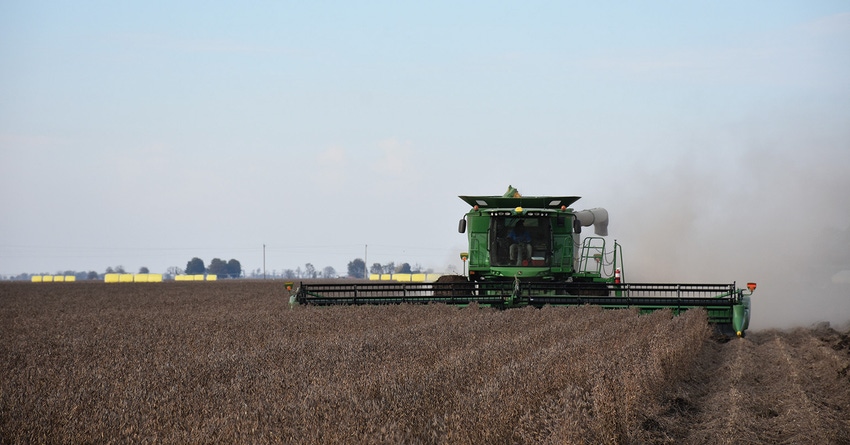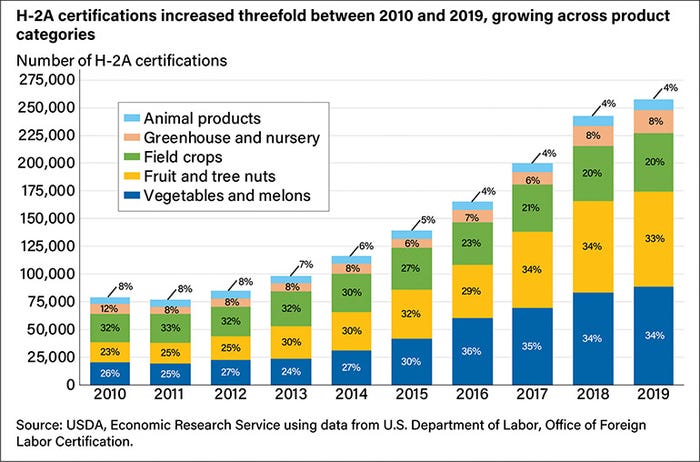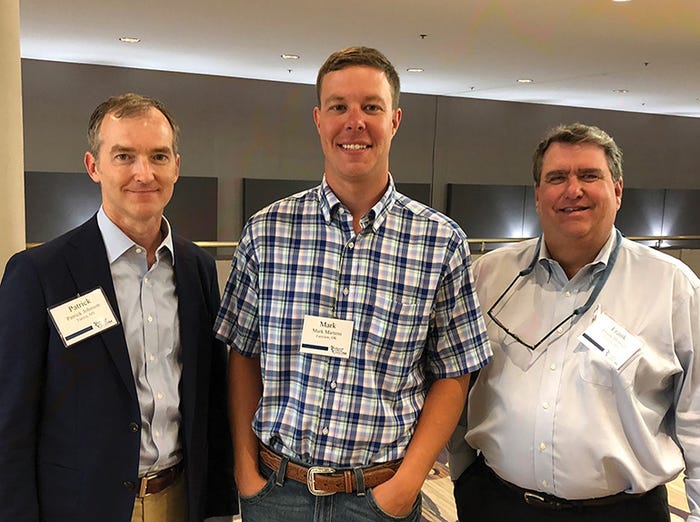
Recent U.S. Department of Labor investigations into violations of the H2A program in Mississippi have highlighted the necessity for accurate information on application forms when employing foreign workers brought in through the federal program.
The most recent violations include failure to pay for transportation of guest workers to the U.S. and failure to state the nature and conditions of the work.
 Recent violations by seven ag-based companies in central Mississippi have led to approximately $70,000 of fines, according to the DOL website.
Recent violations by seven ag-based companies in central Mississippi have led to approximately $70,000 of fines, according to the DOL website.
Mark Martens of Agri Placements International spoke to growers at the August American Cotton Producers meeting in Little Rock, Ark., highlighting the necessity for accurate records when working with the H2A program.
"The scrutiny around the program has increased dramatically," he said. "We're seeing that, especially in the last two years."
Agri Placements International is an agriculture-based firm that helps ag employers manage the necessary information and prepare forms for H2A applications. The company has been helping the ag industry prepare for foreign workers for 24 years and helps producers avoid the pitfalls of a burdensome system.
Ag workers
Finding agricultural workers can be a problem, so many in the ag industry have turned to the H2A program to supply their labor needs. Oversite of the program has led many employers to seek help in managing the program's hurdles.
The number of foreign workers supplied by the program has more than tripled in the last 10 years, according to USDA's Economic Research Service. In 2019, there were 258,000 foreign H2A workers in the U.S.
As the number of foreign workers has increased, the agencies that vet the program are taking a closer look at employers. State and federal agencies are involved in the detailed process, which is ripe with the potential for error.
"The way the process works is you file through three different agencies," he said. "The state workforce agency (SWA), the Department of Labor and the United States Citizenship and Immigration Services (USCIS)."

The paperwork starts at the SWA with a detailed summary of the job. It needs to include all the responsibilities an individual is expected to perform, where they are going to be doing the job and the amount to be paid, including overtime.
"You want to ensure that summary is accurate," Martens said. "That's what we see being used against employers in many cases - in department of labor wage investigations and in legal services lawsuits - is the accuracy of the job."
The job order must be filed within 60 to 75 days before the worker is slated to begin, because it takes that amount of time to move through the system to ultimately get someone working on the farm.
"We like to have three months," he said. "There's propensity for delays. The more time you give it, the better."
Filing window
A first-time H2A user may opt to wave the 60 to 75-day filing window and file for an earlier date, although it is generally not reasonable to assume you get someone in 30 days, according to Martens.
From the SWA, paperwork moves to the DOL. The department performs a regulatory review of the job order.
"The Department of Labor is kind of the fickle beast in all of this," Martens said. "They are the boots on the ground. They are who would show up at your doorstep and perform a wage/hour investigation and ensure compliance on the back end."
DOL will determine if the need is temporary or seasonal. They will also make sure that there are not enough U.S. workers to fill the need of the grower, make sure that housing is satisfactory, and that Workman's Compensation is sufficient. If everything is verified, they will certify the application no later than 30 days from the start date of the job.
The application then moves to the USCIS where that department checks on the authenticity of the employer and the validity of the employee's information.
"They'll take a look at the worker, make sure they don't have any overstays or violations of the law," Marten said.
Employer obligations
The obligations of the employer are to make sure that all state and federal wage laws are followed, provide housing and meals, take care of transportation to and from the country of origin, and reimburse the employee for any consulate or recruiter fees that they may have incurred.
While these are not all the obligations the employer is responsible for, it is imperative that the petitioner is aware of all the requirements.
"There's a subsistence rate, which is commonly overlooked, which is basically a per diem for the period where they're traveling to your location at the start of the contract," Marten said. "And then when they're leaving your location, going home at the end of the contract, those must be paid to the worker as well.
"Many farms don't have workers' compensation policies in place before they use H2A. You do have to have a policy to use H2A."
Martens notes that the most common program violations include errors in payroll record or wage statements, failure to record reimbursements, or misrepresentation of the need for an H2A worker. Simple violations of the requirements can result in costly penalties.
Following the guidelines of the program is the best bet to avoid problems with DOL. Martens offered a number of recommendations to avoid problems encountered in the current environment:
Hire on skill, experience and availability
Offer consistent work/living conditions
Assume you will be reviewed or recorded
Plan to hear from DOL regarding any of your H2A practices
"For the average user, you're using the program because you want to comply," he said. "If you want to hire a legal workforce; you're going to do the majority of the things correctly."
Unfortunately, there are trip-ups and it pays to make sure every aspect of the process is covered to avoid a problem because the DOL will review compliance.
For more information on the H2A program and hiring foreign workers go to: www.dol.gov/agencies/eta/foreign-labor/programs/h-2a
About the Author(s)
You May Also Like






